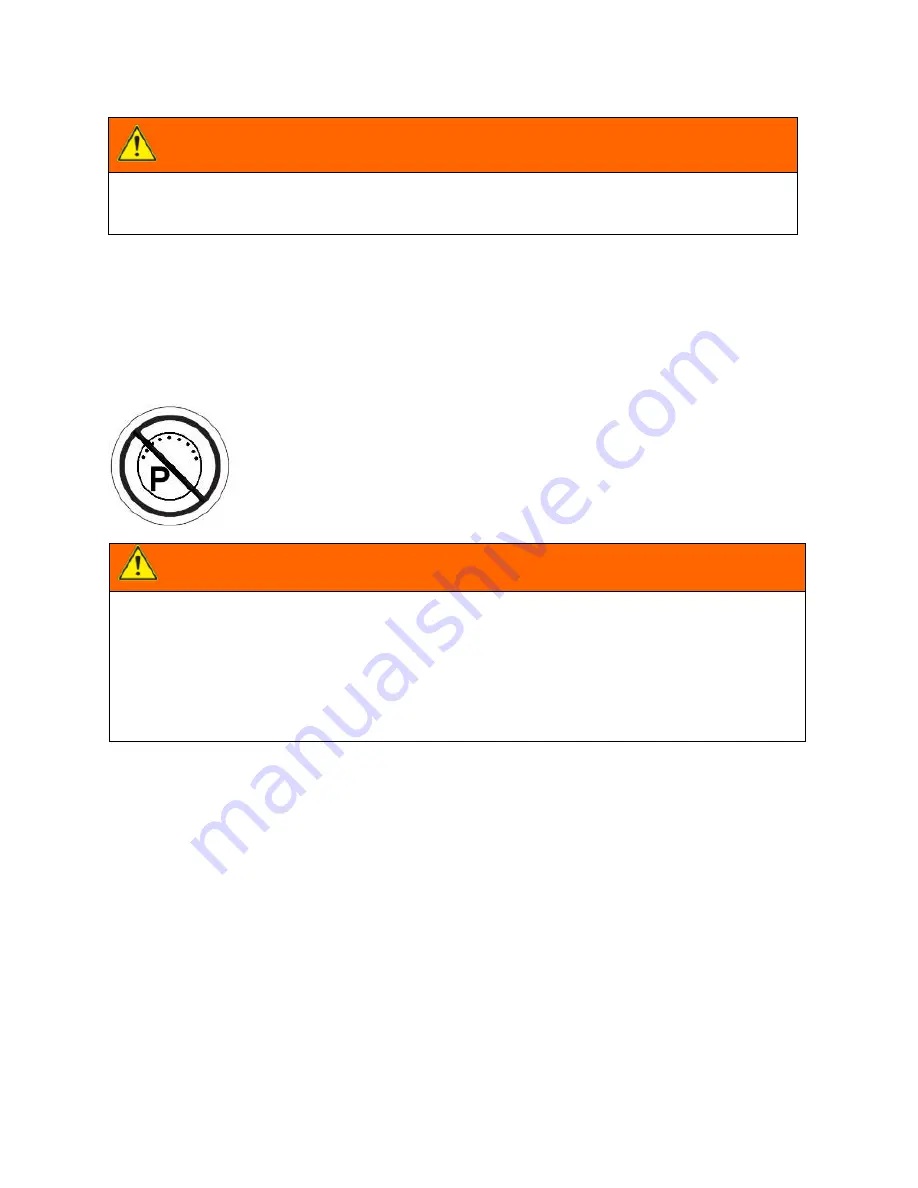
GOLFBOARD OWNER’S MANUAL
34
4.3 TIRE INFLATION AND REPLACEMENT
The GolfBoard employs a
11’’x4’’x4’’ turf style tire with a 4ply construction and inner tube. The
tires are designed for durability and exceptional wear resistance in turf environments. Tires
need to be checked before each operation for proper inflation and condition. Because the
GolfBoard uses a 4wd system, the tires will wear more evenly than standard 2 and 1 wheel
drive vehicles. For this reason, GolfBoard tires need to be replaced as a set (all 4 at once) to
ensure that the board will have equal traction and rotation characteristics.
GolfBoard tires that are over-inflated will reduce the amount of traction you
have on the ground while tires that are underinflated can lead to dangerous
operational conditions. Proper inflation pressures will prolong the life of your
tires and help ensure the smooth operation of your GolfBoard. For these
reasons the tire pressure needs to be watched carefully, and checked before
each use.
Tires should be kept between: 10-13 PSI or 69-90 kPa during operation.
4.3.1
Replacement
When tire wear becomes evident, using basic inspection procedures, you must replace the tires
or injury to operators and/or damage to the GolfBoard could occur. The GolfBoard rim uses
“split rim” technology, which makes tire replacement procedures possible with basic hand tools.
Follow this procedure for removing and replacing worn tires:
Remove air from inner tube.
Remove 4 Allen bolts securing outer half of rim.
Slide the outer half of the rim off.
Slide off used tire and tube.
Replace tire and Inner tube with new genuine GolfBoard parts.
Follow removal procedure in reverse, making sure not to pinch the inner tube between
the tire halves when sliding together.
Carefully reinflate the tire to 10-13 PSI.
WARNING
To prevent serious injury or death from tire explosion never inflate above 20 psi and use a
manual pump to prevent over-inflation.
WARNING
It is critically important that the psi/bar/kPa air pressure indicated on each tire be maintained
in pneumatic tires at all times. Do not underinflate or overinflate your tires. Low pressure may
result in loss of control, and overinflated tires may burst. Failure to maintain the air pressure
rating indicated on pneumatic tires at all times may result in tire and/or wheel failure. Inflate
your tires from a regulated air source with an available pressure gauge. Inflating your tires
from an unregulated air source could overinflate them, resulting in a burst tire.
















































